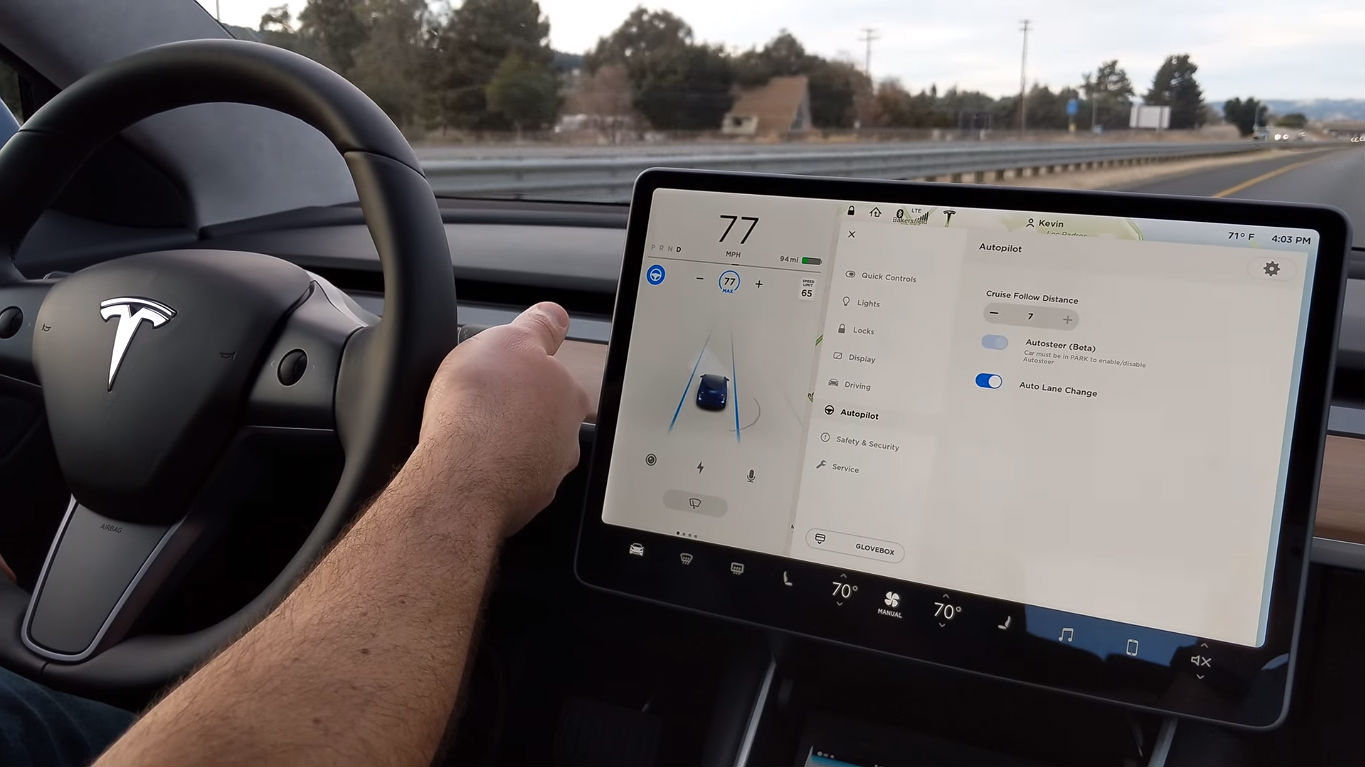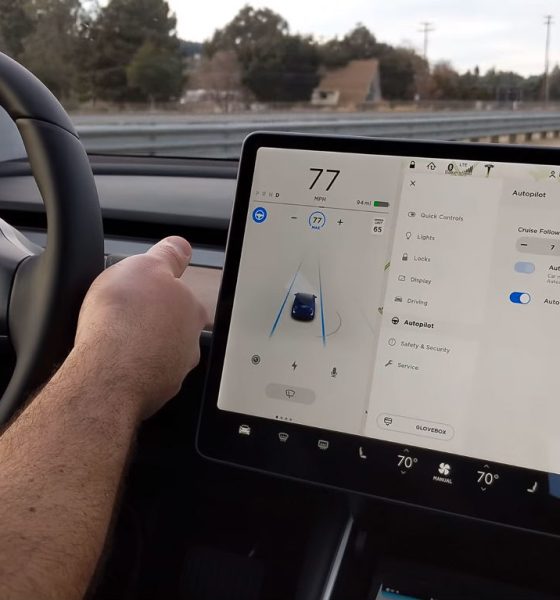

Investor's Corner
Why Tesla Autopilot will ultimately prove the self-driving industry leader
Tesla took an early lead in the race to develop vehicle autonomy, and its Autopilot system remains the state of the art. However, the technology is advancing more slowly than the company predicted – Elon Musk promised a coast-to-coast driverless demo run for 2018, and we’re still waiting. Meanwhile, competitors are hard at work on their own autonomy tech – GM’s Super Cruise, is now available on the CT6 luxury sedan.
Is Tesla in danger of falling behind in the self-driving race? Trent Eady, writing in Medium, takes a detailed look at the company’s Autopilot technology, and argues that the California automaker will continue to set the pace.
Every Tesla vehicle produced since October 2016 is equipped with a hardware suite designed for Full Self-Driving, including cameras, radar, ultrasonic sensors and an upgradable onboard computer. Around 150,000 of these “Hardware 2” Teslas are currently on the road, and could theoretically be upgraded to self-driving vehicles via an over-the-air software update.
Above: In its current state, Tesla’s Autopilot requires a hands-on approach (Youtube: Tesla)
Tesla disagrees with most of the other players in the self-driving game on the subject of Lidar, a technology that calculates distances using pulses of infrared laser light. Waymo, Uber and others seem to regard lidar as a necessary component of any self-driving system. However, Tesla’s Hardware 2 sensor suite doesn’t include it, instead relying on radar and optical cameras.
Lidar’s strength is its high spatial precision – it can measure distances much more precisely than current camera technology can (Eady believes that better software could enable cameras to close the gap). Lidar’s weakness is that it functions poorly in bad weather. Heavy rain, snow or fog causes lidar’s laser pulses to refract and scatter. Radar works much better in challenging weather conditions.
According to Eady, the reason that Tesla eschews lidar may be the cost: “Autonomy-grade lidar is prohibitively expensive, so it’s not possible for Tesla to include it in its production cars. As far as I’m aware, no affordable autonomy-grade lidar product has yet been announced. It looks like that is still years away.”
If Elon Musk and his autonomy team are convinced that lidar isn’t necessary, why does everyone else seem so sure that it is? “Lidar has accrued an aura of magic in the popular imagination,” opines Mr. Eady. “It is easier to swallow the new and hard-to-believe idea of self-driving cars if you tell the story that they are largely enabled by a cool, futuristic laser technology…It is harder to swallow the idea that if you plug some regular ol’ cameras into a bunch of deep neural networks, somehow that makes a car capable of driving itself through complicated city streets.”
Those deep neural networks are the real reason that Eady believes Tesla will stay ahead of its competitors in the autonomy field. The flood of data that Tesla is gathering through the sensors of the 150,000 or so existing Hardware 2 vehicles “offers a scale of real-world testing and training that is new in the history of computer science.”
Competitor Waymo has a computer simulation that contains 25,000 virtual cars, and generates data from 8 million miles of simulated driving per day. Tesla’s real-world data is of course vastly more valuable than any simulation data could ever be, and the company uses it to feed deep neural networks, allowing it to continuously improve Autopilot’s capabilities.
A deep neural network is a type of computing system that’s loosely based on the way the human brain is organized (sounds like the kind of AI that Elon Musk is worried about, but we’ll have to trust that Tesla has this under control). Deep neural networks are good at modeling complex non-linear relationships. The more data that’s available to train the network, the better its performance will be.
“Deep neural networks started to gain popularity in 2012, after a deep neural network won the ImageNet Challenge, a computer vision contest focused on image classification,” Eady explains. “For the first time in 2015, a deep neural network slightly outperformed the human benchmark for the ImageNet Challenge…The fact that computers can outperform humans on even some visual tasks is exciting for anyone who wants computers to do things better than humans can. Things like driving.”
By the way, who was the human benchmark who was bested by a machine in the ImageNet Challenge? Andrej Karpathy, who is now Director of AI at Tesla.
===
Note: Article originally published on evannex.com by Charles Morris; Source: Medium

Investor's Corner
Tesla stock closes at all-time high on heels of Robotaxi progress

Tesla stock (NASDAQ: TSLA) closed at an all-time high on Tuesday, jumping over 3 percent during the day and finishing at $489.88.
The price beats the previous record close, which was $479.86.
Shares have had a crazy year, dipping more than 40 percent from the start of the year. The stock then started to recover once again around late April, when its price started to climb back up from the low $200 level.
This week, Tesla started to climb toward its highest levels ever, as it was revealed on Sunday that the company was testing driverless Robotaxis in Austin. The spike in value pushed the company’s valuation to $1.63 trillion.
Tesla Robotaxi goes driverless as Musk confirms Safety Monitor removal testing
It is the seventh-most valuable company on the market currently, trailing Nvidia, Apple, Alphabet (Google), Microsoft, Amazon, and Meta.
Shares closed up $14.57 today, up over 3 percent.
The stock has gone through a lot this year, as previously mentioned. Shares tumbled in Q1 due to CEO Elon Musk’s involvement with the Department of Government Efficiency (DOGE), which pulled his attention away from his companies and left a major overhang on their valuations.
However, things started to rebound halfway through the year, and as the government started to phase out the $7,500 tax credit, demand spiked as consumers tried to take advantage of it.
Q3 deliveries were the highest in company history, and Tesla responded to the loss of the tax credit with the launch of the Model 3 and Model Y Standard.
Additionally, analysts have announced high expectations this week for the company on Wall Street as Robotaxi continues to be the focus. With autonomy within Tesla’s sights, things are moving in the direction of Robotaxi being a major catalyst for growth on the Street in the coming year.
Elon Musk
Tesla needs to come through on this one Robotaxi metric, analyst says
“We think the key focus from here will be how fast Tesla can scale driverless operations (including if Tesla’s approach to software/hardware allows it to scale significantly faster than competitors, as the company has argued), and on profitability.”

Tesla needs to come through on this one Robotaxi metric, Mark Delaney of Goldman Sachs says.
Tesla is in the process of rolling out its Robotaxi platform to areas outside of Austin and the California Bay Area. It has plans to launch in five additional cities, including Houston, Dallas, Miami, Las Vegas, and Phoenix.
However, the company’s expansion is not what the focus needs to be, according to Delaney. It’s the speed of deployment.
The analyst said:
“We think the key focus from here will be how fast Tesla can scale driverless operations (including if Tesla’s approach to software/hardware allows it to scale significantly faster than competitors, as the company has argued), and on profitability.”
Profitability will come as the Robotaxi fleet expands. Making that money will be dependent on when Tesla can initiate rides in more areas, giving more customers access to the program.
There are some additional things that the company needs to make happen ahead of the major Robotaxi expansion, one of those things is launching driverless rides in Austin, the first city in which it launched the program.
This week, Tesla started testing driverless Robotaxi rides in Austin, as two different Model Y units were spotted with no occupants, a huge step in the company’s plans for the ride-sharing platform.
Tesla Robotaxi goes driverless as Musk confirms Safety Monitor removal testing
CEO Elon Musk has been hoping to remove Safety Monitors from Robotaxis in Austin for several months, first mentioning the plan to have them out by the end of 2025 in September. He confirmed on Sunday that Tesla had officially removed vehicle occupants and started testing truly unsupervised rides.
Although Safety Monitors in Austin have been sitting in the passenger’s seat, they have still had the ability to override things in case of an emergency. After all, the ultimate goal was safety and avoiding any accidents or injuries.
Goldman Sachs reiterated its ‘Neutral’ rating and its $400 price target. Delaney said, “Tesla is making progress with its autonomous technology,” and recent developments make it evident that this is true.
Investor's Corner
Tesla gets bold Robotaxi prediction from Wall Street firm
Last week, Andrew Percoco took over Tesla analysis for Morgan Stanley from Adam Jonas, who covered the stock for years. Percoco seems to be less optimistic and bullish on Tesla shares, while still being fair and balanced in his analysis.

Tesla (NASDAQ: TSLA) received a bold Robotaxi prediction from Morgan Stanley, which anticipates a dramatic increase in the size of the company’s autonomous ride-hailing suite in the coming years.
Last week, Andrew Percoco took over Tesla analysis for Morgan Stanley from Adam Jonas, who covered the stock for years. Percoco seems to be less optimistic and bullish on Tesla shares, while still being fair and balanced in his analysis.
Percoco dug into the Robotaxi fleet and its expansion in the coming years in his latest note, released on Tuesday. The firm expects Tesla to increase the Robotaxi fleet size to 1,000 vehicles in 2026. However, that’s small-scale compared to what they expect from Tesla in a decade.
Tesla expands Robotaxi app access once again, this time on a global scale
By 2035, Morgan Stanley believes there will be one million Robotaxis on the road across multiple cities, a major jump and a considerable fleet size. We assume this means the fleet of vehicles Tesla will operate internally, and not including passenger-owned vehicles that could be added through software updates.
He also listed three specific catalysts that investors should pay attention to, as these will represent the company being on track to achieve its Robotaxi dreams:
- Opening Robotaxi to the public without a Safety Monitor. Timing is unclear, but it appears that Tesla is getting closer by the day.
- Improvement in safety metrics without the Safety Monitor. Tesla’s ability to improve its safety metrics as it scales miles driven without the Safety Monitor is imperative as it looks to scale in new states and cities in 2026.
- Cybercab start of production, targeted for April 2026. Tesla’s Cybercab is a purpose-built vehicle (no steering wheel or pedals, only two seats) that is expected to be produced through its state-of-the-art unboxed manufacturing process, offering further cost reductions and thus accelerating adoption over time.
Robotaxi stands to be one of Tesla’s most significant revenue contributors, especially as the company plans to continue expanding its ride-hailing service across the world in the coming years.
Its current deployment strategy is controlled and conservative to avoid any drastic and potentially program-ruining incidents.
So far, the program, which is active in Austin and the California Bay Area, has been widely successful.








